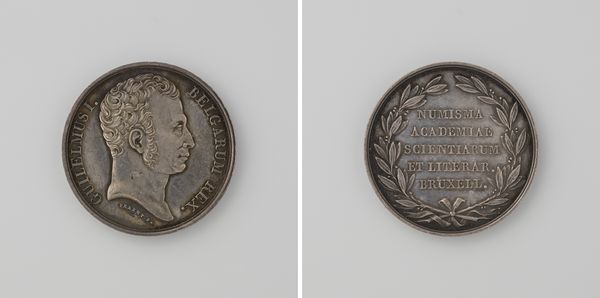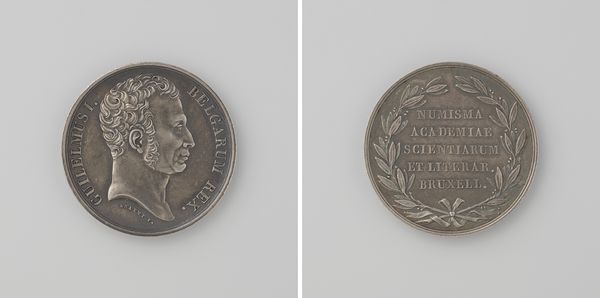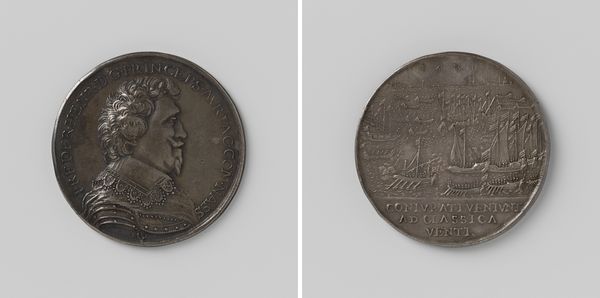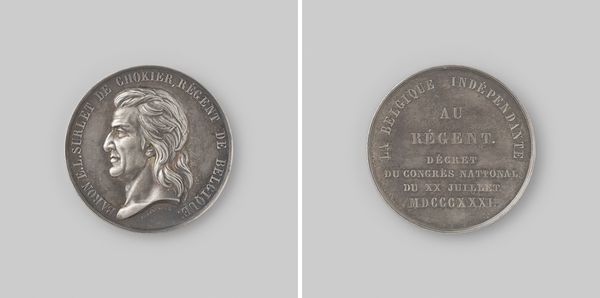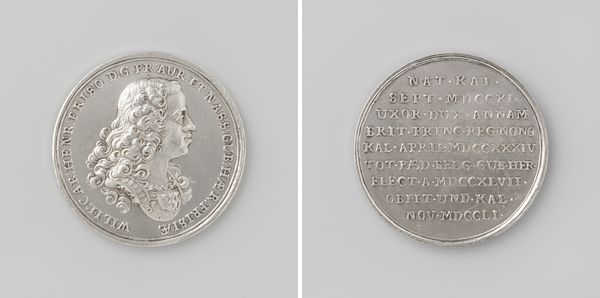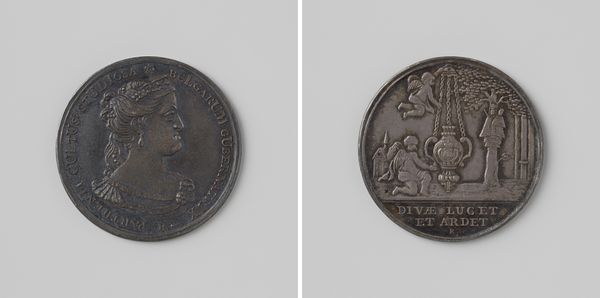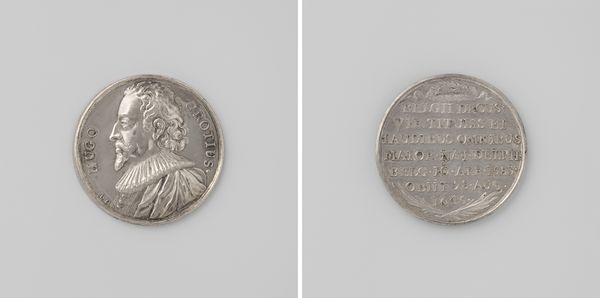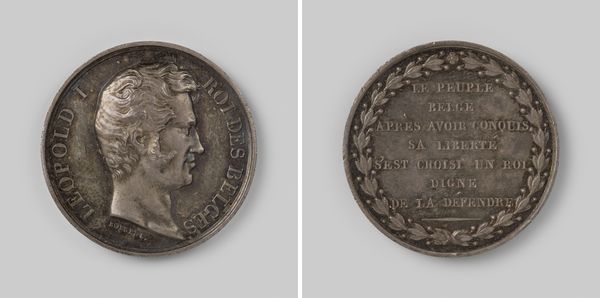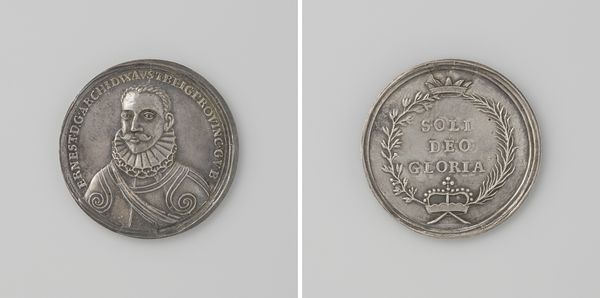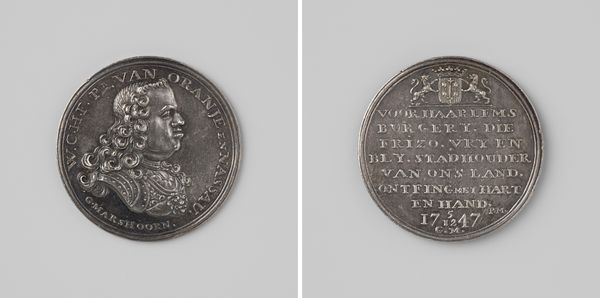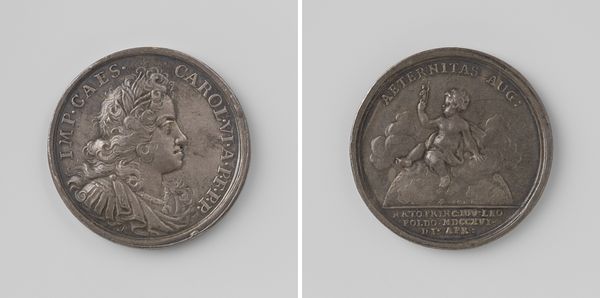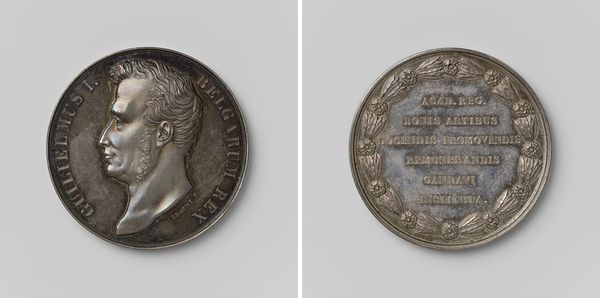
metal, sculpture
#
portrait
#
neoclacissism
#
metal
#
sculpture
#
history-painting
Dimensions: diameter 3.3 cm, weight 150 gr
Copyright: Rijks Museum: Open Domain
Curator: This is an interesting piece! The "Koninklijke Academie van Wetenschappen en Letteren te Brussel," a medal created in 1816 by Joseph-Pierre Braemt. It appears to be crafted from metal. There's a stark, almost severe quality to the portrait. How do you interpret this work as an object? Editor: Well, it’s a coin-like object with the image of royalty on one side and what appears to be a dedication on the other. Being metal, it must have taken considerable skill and labor to produce the relief. Is it considered a piece of Neoclassical sculpture because of the material used and the way the figures and text are embedded into the metal medium? Curator: Precisely! And we should also think about its purpose. A medal like this was not merely decorative. It represents a deliberate investment in commemorating and legitimizing the institutions of power, namely the academy and the monarchy itself. Consider the material – metal, durable and valuable – and the techniques involved. Die-striking wasn't simple; skilled laborers were involved in every stage. What statement is being made by employing this mode of production? Editor: It feels like permanence and importance were key considerations. It suggests that knowledge, or at least the institution of the academy, along with the King, are intended to be enduring and valued. Also, given that it’s reproducible, it must have served as propaganda. The image of the King would have spread. Curator: Exactly! It shows the intersection of artistic production, political power, and social messaging in the early 19th century. Notice the details in the Latin text too: "Numisma Academiae Scientiarum et Literarum Bruxell." Medals like this offer an interesting window into the priorities and power structures of the time. What do you think such an object might say to the working class, for example? Editor: That's a perspective I hadn't considered. Perhaps it reinforced a sense of social hierarchy, reminding them of their place in society and who controlled knowledge production and the very material wealth of the country. The work definitely makes me think more critically about the purpose and underlying message conveyed by materials. Curator: And that critical examination, focusing on material, production, and reception, helps us understand the complexities embedded within this seemingly simple metal disc. It challenges our traditional notions of art by placing it firmly within its socio-economic context. Editor: Right. Looking at art as material culture really expands how we see these historical objects and reveals much more than just their aesthetic qualities. Thanks!
Comments
No comments
Be the first to comment and join the conversation on the ultimate creative platform.
